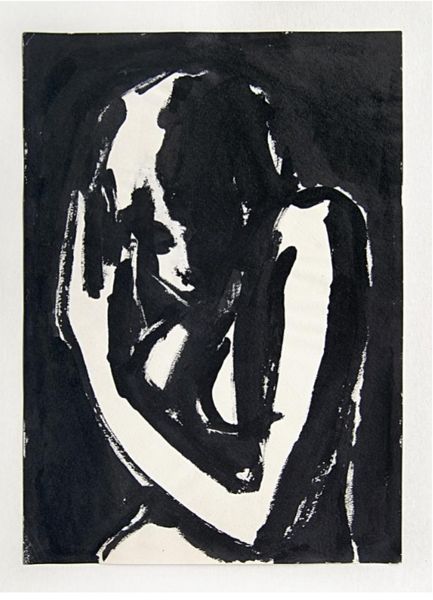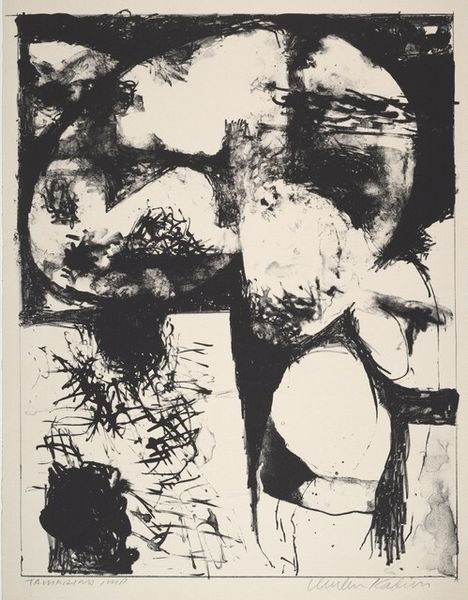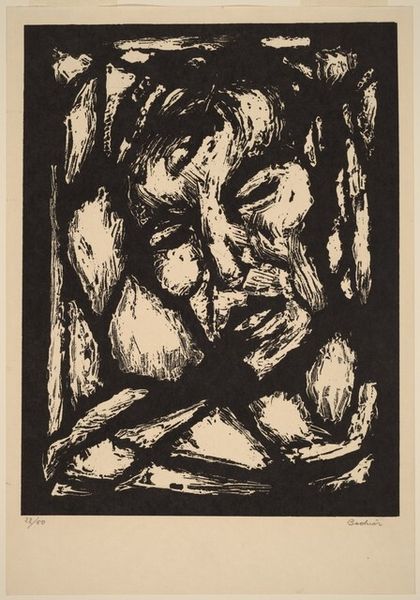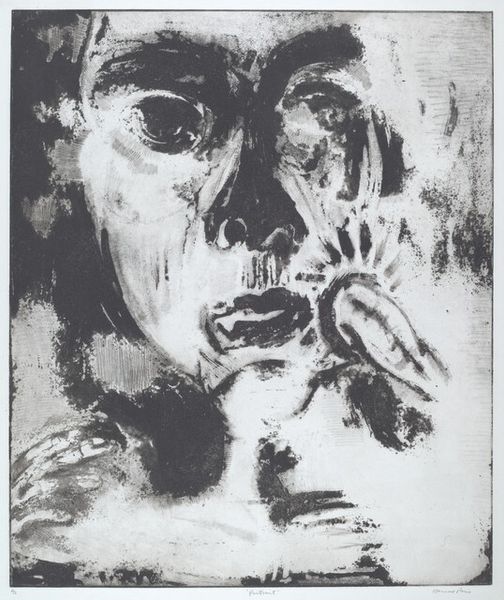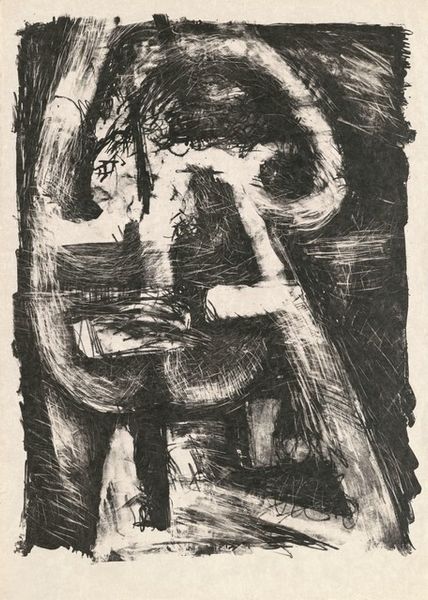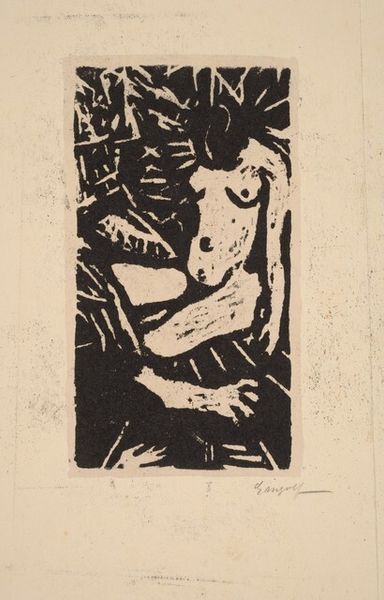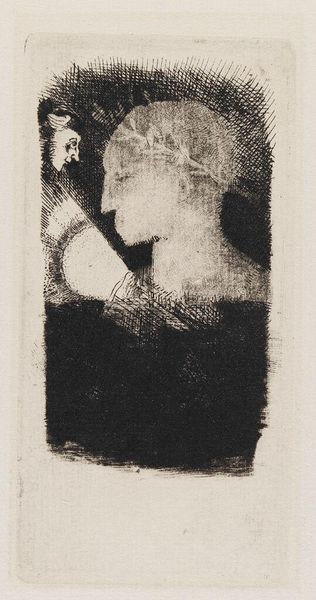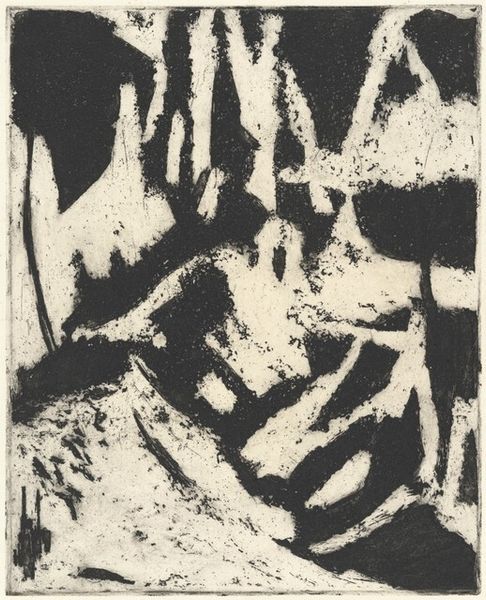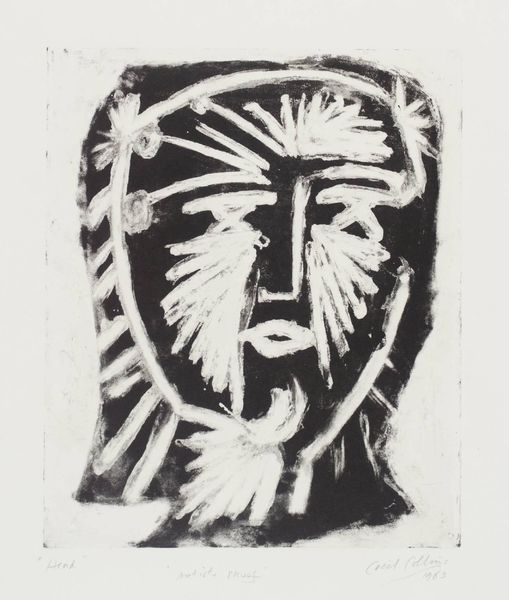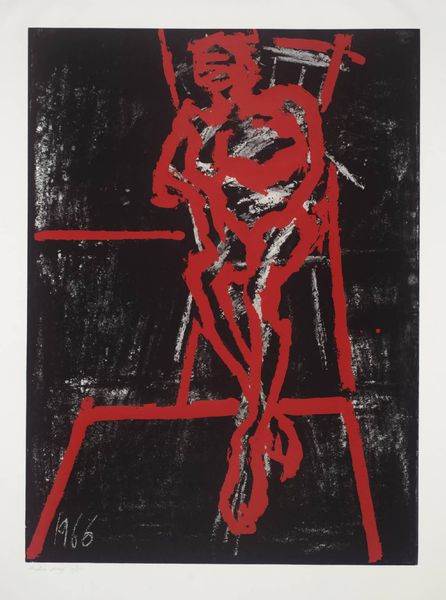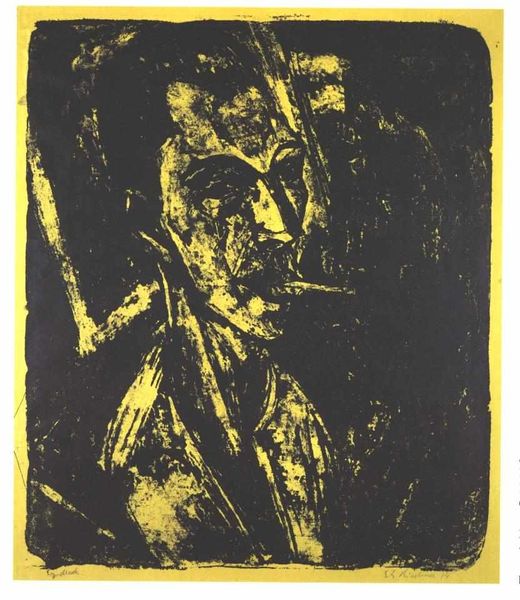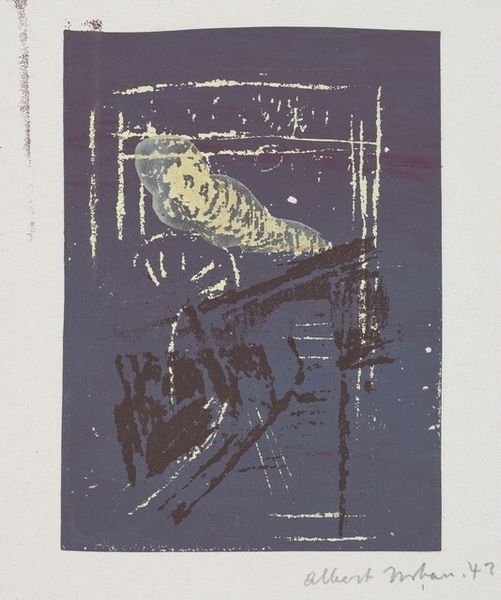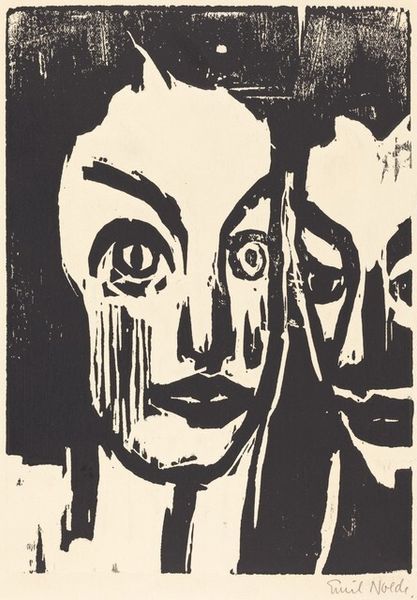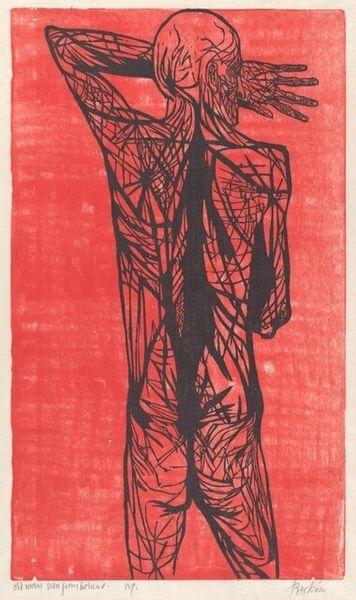
graphic-art, print
#
portrait
#
graphic-art
#
self-portrait
# print
#
charcoal drawing
#
pencil drawing
#
portrait drawing
#
monochrome
Copyright: National Gallery of Art: CC0 1.0
Carl Pickhardt made this intriguing Double Self-Portrait using serigraphy, also known as silkscreen printing. The doubling of the face allows for exploration of the self in a psychoanalytic way. Pickhardt made the piece in the USA, seemingly during the middle of the twentieth century. During this time, American culture was heavily influenced by Freudian ideas about the unconscious. The artist uses a limited palette of black, red, and a muted gold or yellow to create a high-contrast, arresting image. The red face floats above the more subtly rendered face beneath, perhaps suggesting a hidden or repressed aspect of the self. Pickhardt might be asking questions about the relationship between the conscious and unconscious mind, or about the way the individual is split between inner thoughts and outward presentation. To fully understand this work, we need to delve into the artistic and intellectual environment in which it was created. Research into the artist's life, the history of serigraphy, and the prevalence of psychoanalytic ideas in mid-century American culture could deepen our understanding of the work. Ultimately, a piece like this reminds us that art is always a product of its time, and that its meaning is shaped by the social and intellectual context in which it is created and received.
Comments
No comments
Be the first to comment and join the conversation on the ultimate creative platform.
